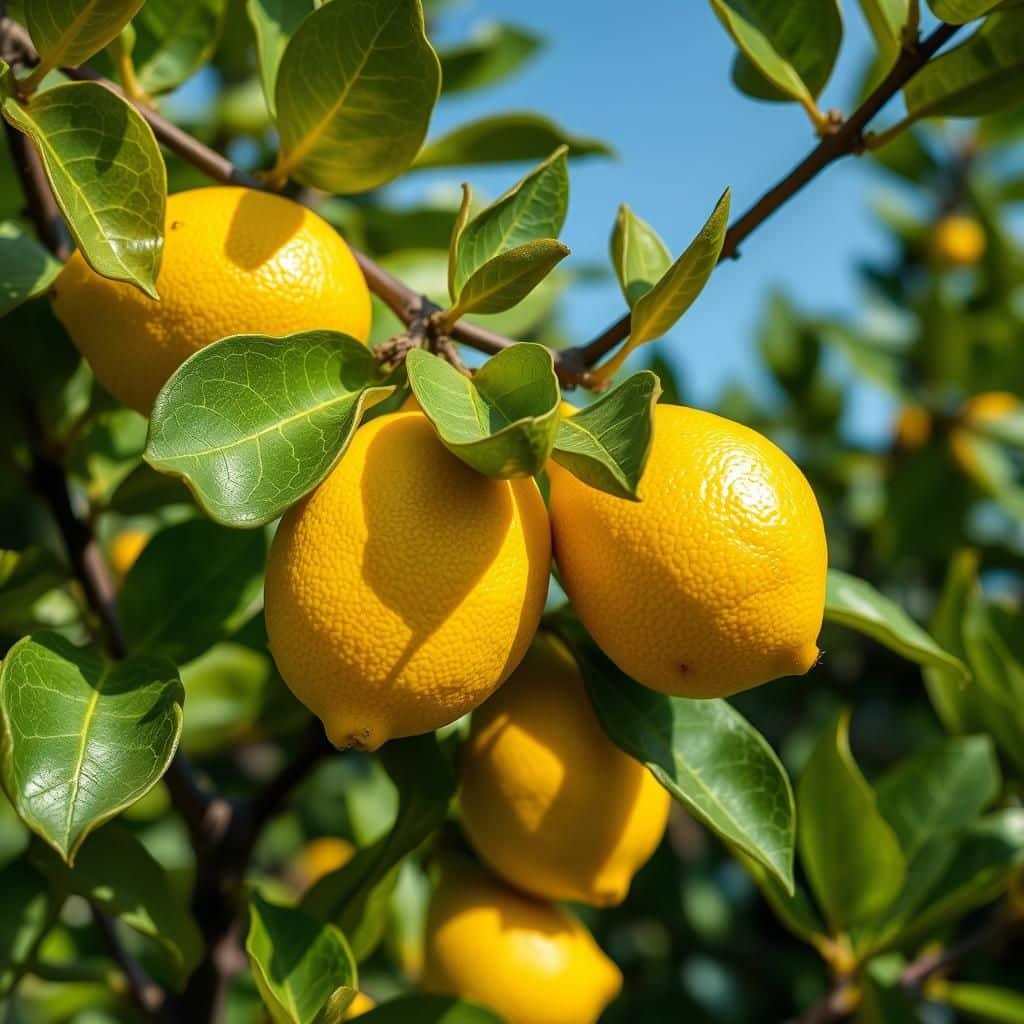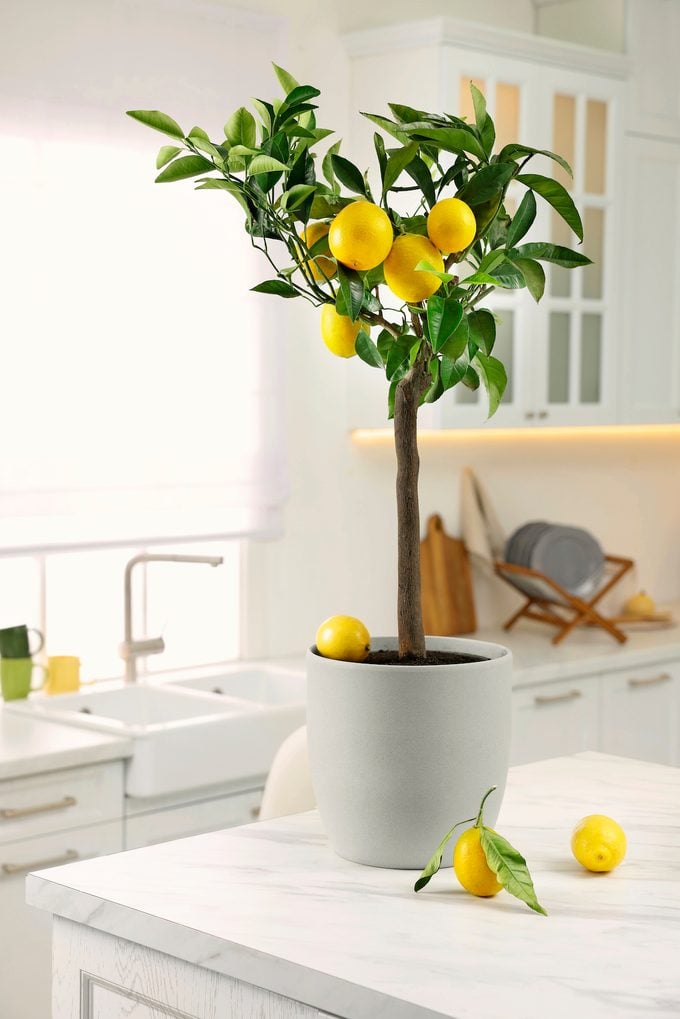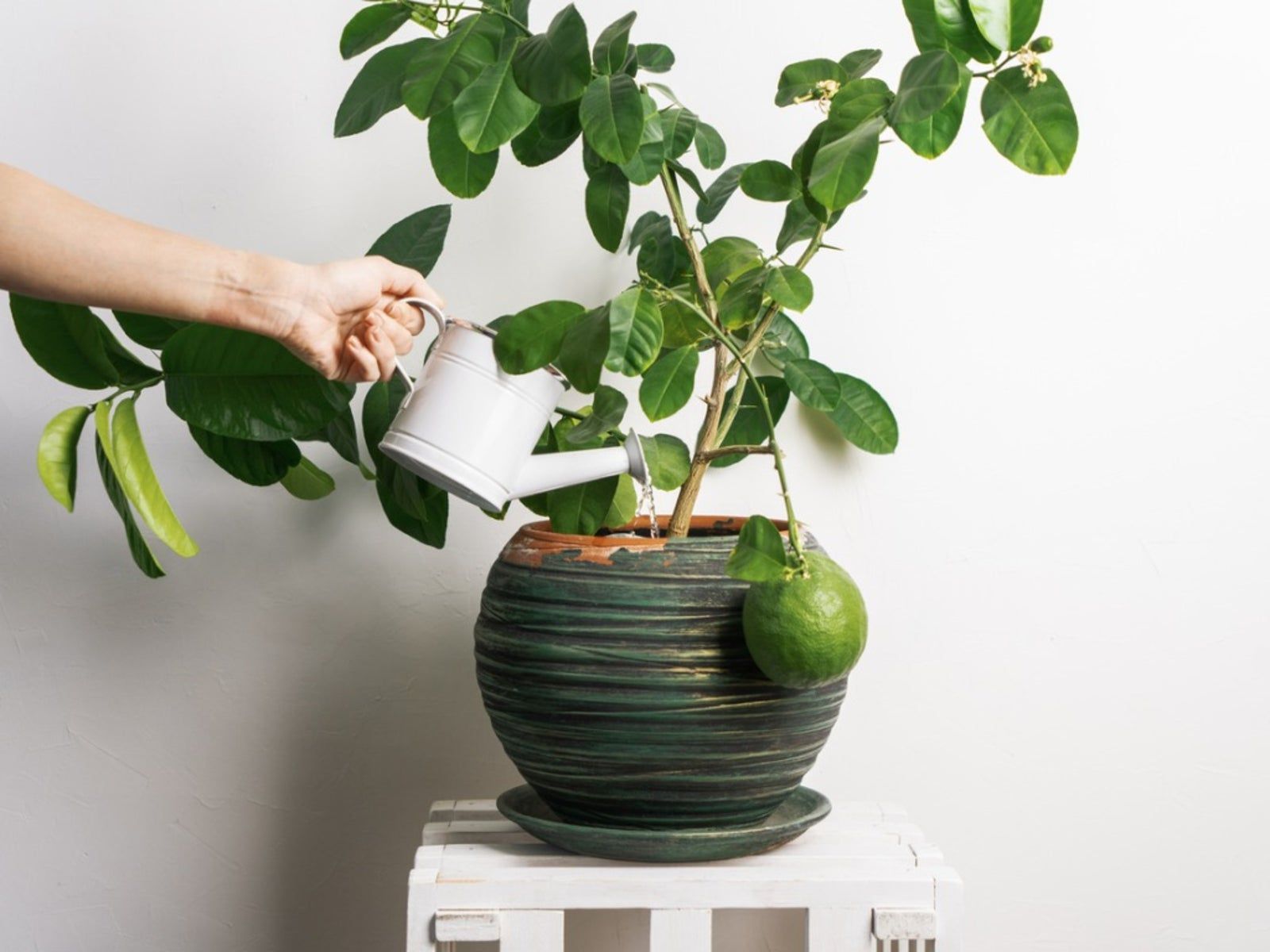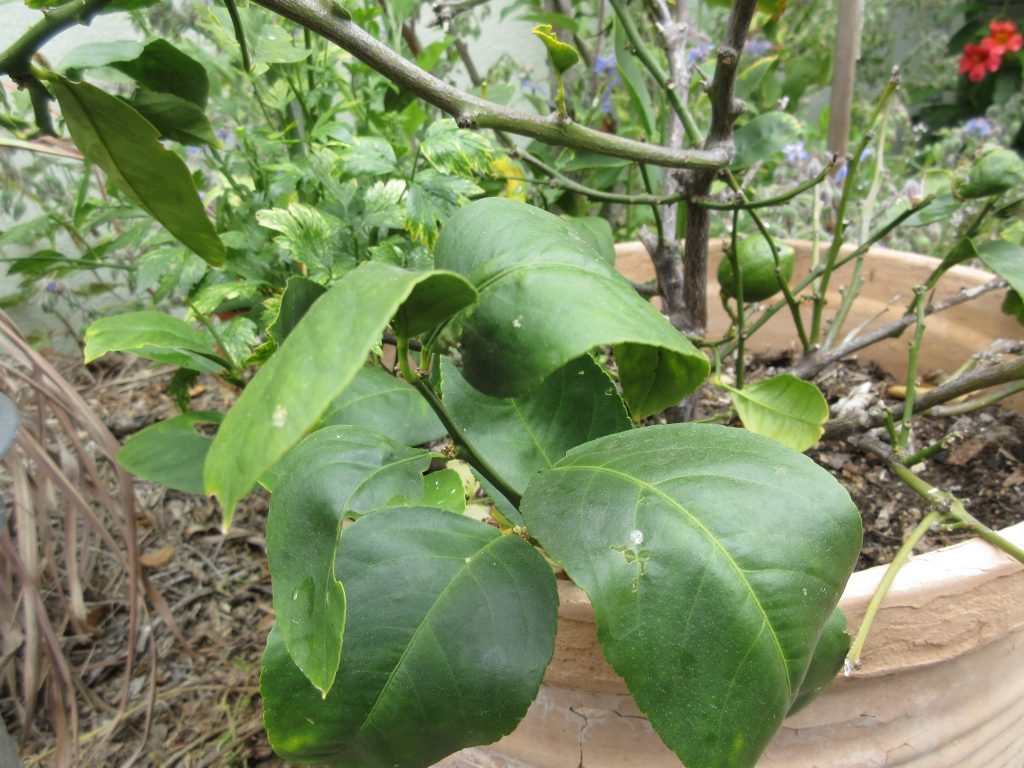Essential Guide: How to Look After a Lemon Tree for Bountiful Fruit and Healthy Growth

Lemon trees are not only a delightful addition to any garden but also a rewarding source of fresh fruit. Whether you're a seasoned gardener or a beginner, understanding how to care for your lemon tree is crucial for ensuring bountiful harvests and promoting healthy growth. This essential guide will cover the key aspects of lemon tree care, including soil requirements, watering techniques, pruning methods, and pest management. By following these guidelines, you can cultivate a thriving lemon tree that not only enhances your landscape but also provides an abundance of juicy lemons for culinary delights and refreshing beverages.
How to Properly Care for a Lemon Tree
Caring for a lemon tree involves a combination of proper watering, sunlight, and fertilization to ensure healthy growth and fruit production. Lemon trees thrive in well-draining soil and require a balance between getting enough moisture and avoiding waterlogging. Regular pruning helps maintain its shape and encourages better air circulation, while protecting it from pests and diseases can be crucial for its overall health. With the right care routine, you can enjoy bountiful harvests of fresh lemons straight from your garden.
Choosing the Right Soil
The ideal soil for a lemon tree should be well-draining and rich in organic matter. A mix of sand, silt, and clay can help maintain the right texture for optimal drainage. Using a potting mix specifically designed for citrus plants can also provide necessary nutrients. Avoid heavy clays that retain too much water, as this can lead to root rot and other issues.
Watering Practices
Watering a lemon tree requires attention to the tree's needs depending on the climate and the season. Typically, lemon trees should be watered deeply but infrequently, allowing the top few inches of soil to dry out between watering. Overwatering can be detrimental, so always check the soil moisture before applying more water. During hot months, you may need to increase the frequency of watering to maintain healthy growth.
Light Requirements
Lemon trees require a lot of sunlight—at least 6 to 8 hours of direct sunlight each day. If grown indoors, they should be placed near a south-facing window to maximize their exposure to sunlight. If grown outdoors, ensure that they are positioned in a location that is sheltered from strong winds, which can damage the tree and its fruit.
Fertilization Schedule
Fertilization is crucial for the health of a lemon tree. Applying a balanced fertilizer formulated for citrus trees during the growing season can enhance growth and fruit production. A general schedule involves fertilizing every 6 to 8 weeks during the growing season, reducing in frequency as the tree enters dormancy in cooler months. Always follow the manufacturer’s instructions for the correct dosage.
Pest and Disease Management
Regularly inspect your lemon tree for signs of pests or diseases, such as aphids, scale, or fungal infections. Implementing organic pest control methods, such as insecticidal soap, can help treat infestations without harming beneficial insects. Maintaining good air circulation through proper pruning can also prevent diseases caused by moisture buildup. Being proactive in managing pests and diseases ensures your lemon tree remains healthy and productive.
| Aspect | Recommendation |
|---|---|
| Soil Type | Well-draining, rich in organic matter |
| Watering | Deeply, but infrequently |
| Sunlight | 6-8 hours of direct sunlight |
| Fertilization | Every 6-8 weeks during growing season |
| Pest Management | Regular inspections and organic controls |
How do you maintain a lemon tree?

To maintain a lemon tree, it is essential to focus on various aspects such as soil quality, sunlight exposure, watering, pruning, and pest control. Following these guidelines can help you grow a healthy and fruitful lemon tree.
Soil Quality
Maintaining optimal soil quality is crucial for the health of your lemon tree. Lemon trees prefer well-draining soil that is rich in organic matter. This can be achieved through the following methods:
- Choose a sandy loam or silty loam as the base for your soil mix.
- Add compost or well-rotted manure to enhance nutrient content.
- Ensure the soil pH is between 5.5 and 6.5 to promote optimal growth.
Sunlight Exposure
Lemon trees require plenty of sunlight to flourish. It is vital to place your tree in a location that maximizes its exposure to direct sunlight. Here are some tips for ensuring adequate sunlight:
- Plant your lemon tree in an area that receives at least 8-12 hours of sunlight daily.
- Avoid places that are shaded by buildings or larger trees.
- If growing indoors, place the tree near a south-facing window.
Watering
Proper watering is essential to maintaining a lemon tree’s health. Overwatering or underwatering can lead to various problems such as root rot or dehydration. To manage watering effectively:
- Water your lemon tree deeply but infrequently, allowing the top inch of soil to dry out between waterings.
- During hot months, increase the frequency, ensuring the soil remains moist but not saturated.
- Consider using a drainage system to prevent waterlogging.
Pruning
Regular pruning helps to maintain the shape and health of your lemon tree. It encourages better airflow and sunlight penetration. Here’s how to effectively prune your tree:
See also:
- Remove any dead, damaged, or crossing branches to promote healthy growth.
- Trim back the tips of branches to encourage bushier growth.
- Prune during the dormant season, ideally late winter or early spring.
Pest Control
Addressing pest control is essential to protect your lemon tree from infestations that can hinder its growth. Follow these methods to keep pests at bay:
- Regularly check for signs of pests such as aphids, scale, and spider mites.
- Use insecticidal soap or a homemade mixture of mild dish soap and water to treat infestations.
- Encourage beneficial insects like ladybugs that prey on harmful pests.
How do you care for a potted lemon tree indoors?

To care for a potted lemon tree indoors, it is essential to provide the right growing conditions, proper watering, fertilization, and pest management. Lemon trees thrive in environments that mimic their natural habitat of warm sunshine and moderate humidity. Below are detailed steps and tips to ensure your indoor lemon tree remains healthy and productive.
Choosing the Right Pot
Selecting an appropriate pot is crucial for the health of your indoor lemon tree. The right pot promotes good drainage and allows for healthy root development.
- Opt for a pot made of terracotta or clay, as these materials allow for better air circulation.
- Ensure the pot has drainage holes at the bottom to prevent water accumulation and root rot.
- Choose a pot that is at least 12 inches in diameter for young trees, increasing in size as the tree grows.
Soil Requirements
The soil used for your potted lemon tree should be well-draining and rich in nutrients. Citrus trees prefer slightly acidic soil, generally with a pH level between 5.5 and 6.5.
- Use a citrus or potting mix that contains peat, pine bark, and perlite for optimal drainage.
- Add compost or fertilizer pellets to fortify the soil with essential nutrients.
- Consider testing the soil's pH level and amending it if necessary for the best growth conditions.
Watering Practices
Proper watering is vital to maintain the health of an indoor lemon tree. Overwatering or underwatering can lead to severe problems.
- Water the tree deeply but less frequently, allowing the top soil to dry out between waterings.
- Check the soil moisture using your fingers; the top two inches should feel dry before watering again.
- Avoid letting the tree sit in standing water, as this can cause root rot.
Light and Temperature Needs
Lemon trees require a significant amount of sunlight to grow and bear fruit indoors. Placing them in the right location is crucial.
- Place the pot in a spot where it receives at least 12 hours of sunlight a day, preferably near a south-facing window.
- If natural light is insufficient, consider using a grow light to supplement the sunlight.
- Keep the indoor temperature consistent, ideally between 65°F and 75°F (18°C to 24°C), avoiding cold drafts.
Fertilization and Maintenance
Regular fertilization is necessary to support healthy growth and fruit production in your indoor lemon tree.
- Fertilize every 4 to 6 weeks with a high-quality citrus fertilizer during the growing season (spring and summer).
- Reduce the frequency during fall and winter when the tree is dormant.
- Prune any dead or overlapping branches to improve air circulation and encourage a healthy, bushy shape.
How often should you water a lemon tree?

To determine how often to water a lemon tree, it is essential to consider several factors including the age of the tree, the climate conditions, and the specific growth stage of the tree. Generally, lemon trees require consistent moisture to thrive, but overwatering can lead to root rot. Here are some guidelines to help you manage the watering schedule effectively:
Understanding Lemon Tree Water Needs
Lemon trees need a balanced amount of water to maintain healthy growth. The watering frequency can vary based on the season and environmental conditions. Consider the following:
- In warmer months, lemon trees may require watering every 1 to 2 weeks.
- During cooler months, reduce the frequency to once every 2 to 4 weeks.
- Always check the soil moisture before watering; it should not be soggy.
Signs of Underwatering
Recognizing the signs of underwatering is crucial for the health of your lemon tree. If the tree does not receive enough water, it may exhibit several symptoms:
- Leaves may turn yellow and drop off.
- The tree may exhibit stunted growth or no new growth at all.
- Fruits can become smaller or may drop prematurely.
Signs of Overwatering
Overwatering is another potential issue that can harm lemon trees. Symptoms of overwatering include:
See also:
- Roots may begin to rot, resulting in a weakened tree.
- Leaves may turn brown and appear mushy.
- Wilting can occur even when the soil is wet.
Soil Drainage Factors
The type of soil and its drainage capabilities play a vital role in determining how often you should water your lemon tree. Good drainage helps prevent waterlogging, which is crucial for the health of the roots. Here are some aspects to consider:
- Use well-draining soil mixes; adding perlite or sand can improve drainage.
- Ensure pots have drainage holes if your tree is containerized.
- Consider the location; water-holding soil may need less frequent watering.
Watering Techniques for Lemon Trees
Implementing the right watering techniques can enhance the well-being of your lemon tree. Effective watering methods ensure that the roots receive adequate moisture. Here are some recommended techniques:
- Water deeply and less frequently to encourage roots to grow deeper.
- Use a soaker hose or drip irrigation system for more efficient watering.
- Check the moisture level by inserting your finger about 2 inches into the soil before watering.
Why are my lemon tree leaves curling and falling off?

The curling and falling off of lemon tree leaves can be attributed to various factors that affect the health of the plant. Understanding these factors is crucial for effective care and maintenance of your lemon tree. Here are the primary reasons why your lemon tree leaves might be curling and falling off:
Pest Infestation
Pests are one of the most common reasons for leaf curling and drop in lemon trees. A variety of insects can attack lemon trees, causing significant damage.
- Aphids: These small insects feed on the sap, leading to curling leaves.
- Spider mites: They thrive in dry conditions and can cause stippling and curling of the leaves.
- Scale insects: These pests create a protective shell that can hinder leaf growth and vitality.
Environmental Stress
Environmental factors play a crucial role in the health of lemon trees. Changes in temperature, humidity, and sunlight can stress the tree, resulting in leaf curling.
- Temperature fluctuations: Lemon trees thrive in warm conditions and can become stressed due to extreme cold or heat.
- Humidity levels: Insufficient humidity can lead to leaf curling as the tree struggles to retain moisture.
- Direct sunlight: While lemon trees need sunlight, too much can cause leaf scorch, leading to adhesion and curl.
Watering Issues
Improper watering practices can lead to significant stress for lemon trees, which in turn can cause leaves to curl and fall.
- Overwatering: Excess moisture can cause root rot, preventing proper nutrient uptake.
- Underwatering: Insufficient water can lead to drought stress, causing leaves to curl upward.
- Inconsistent watering: Irregular watering schedules can shock the tree, leading to leaf drop.
Nutrient Deficiencies
Nutrient deficiencies can severely affect the health of lemon trees, making them more susceptible to problems such as leaf curling.
- Magnesium deficiency: A lack of magnesium can cause yellowing and curling of leaves.
- Iron deficiency: Insufficient iron can lead to chlorosis, affecting overall leaf health.
- Nitrogen deficiency: A shortfall in nitrogen can stunt growth and lead to yellowing and drooping leaves.
Diseases and Fungal Infections
Diseases and fungal infections can also be responsible for leaf curling and dropping in lemon trees.
- Powdery mildew: This fungal disease can cause distorted leaves and premature leaf drop.
- Citrus canker: It leads to yellowing and curling of leaves due to infected spots.
- Bacterial infections: Bacterial diseases can create stress symptoms such as leaf curling and dropping.
Questions from Our Readers
What is the best way to water a lemon tree?
To properly water a lemon tree, it is essential to keep the soil moist but not waterlogged. Water deeply once a week, allowing the top inch of soil to dry out between waterings. In hotter months, you may need to adjust the frequency, ensuring that the tree receives adequate moisture for healthy growth.
How much sunlight does a lemon tree need?
A lemon tree thrives in full sunlight, requiring at least 6 to 8 hours of direct sunlight each day. It's crucial to position the tree in a spot that maximizes light exposure, as insufficient sunlight can lead to poor fruit production and overall weak health of the tree.
What type of soil is best for a lemon tree?
Lemon trees prefer well-draining soil that is slightly acidic with a pH level between 5.5 and 6.5. Using a mix of potting soil and sand or perlite can improve drainage, helping to prevent root rot and promoting a healthy root system for optimal growth.
When is the best time to fertilize a lemon tree?
The best times to fertilize a lemon tree are in early spring and late summer. During these seasons, use a balanced fertilizer specially formulated for citrus trees to provide essential nutrients, ensuring that the tree remains vibrant and produces a bountiful harvest of fruits.
See also:

If you want to read more articles like Essential Guide: How to Look After a Lemon Tree for Bountiful Fruit and Healthy Growth, we recommend you check out our Gardeners category.
Leave a Reply
Related Articles